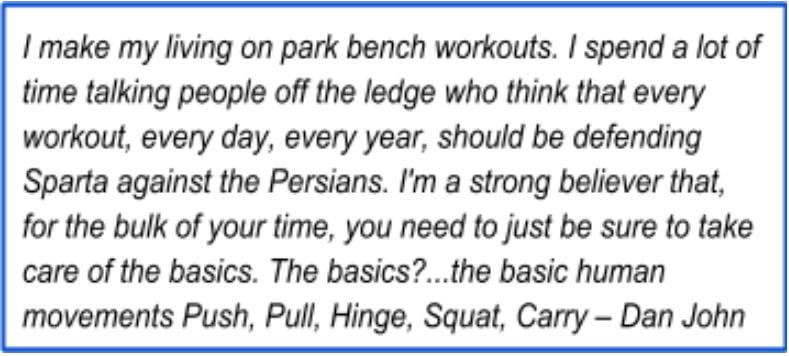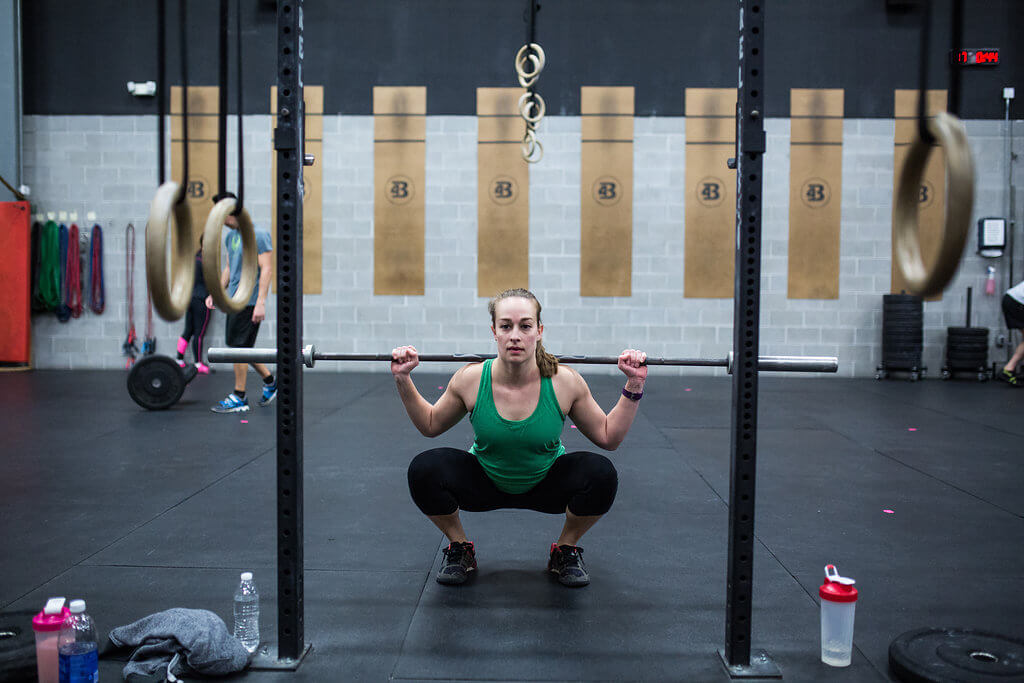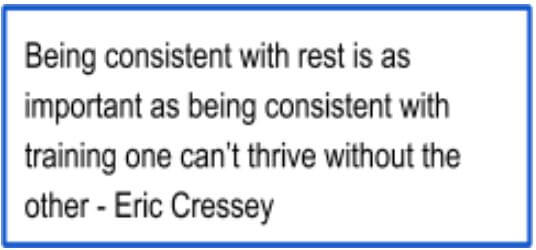Perspective – The Why Behind Programming and Periodization
CrossFit in its original and truest form is entirely dedicated to the increasing of one’s general physical preparedness (GPP). In layman’s terms, this means one’s capacity to overcome any physical task life may throw your way. In even simpler terms, CrossFit aims to make you like Captain America, who although human, can outrun, out jump, out lift, and outlast his human companions.
Four Barrel was founded on the CrossFit methodology, but at our core we are a strength and conditioning gym. Meaning we stand behind the CrossFit method but make adjustments to our programming – whether it’s CrossFit, Competitors, LeanX, or Weightlifting – based on the overarching goals and timeline of the program, the intention of the cycle, and the progress we observe from our members.
So, if you have ever wondered, “Why are we doing this stuff?” Whether it was while performing tempo squats to the increasingly obnoxious count of your coach, or maybe out of a heartfelt longing to resume your love affair with the barbell after the open, or during a “deload” week; hopefully you will find your answers below…
BUT, before we get to the answers you desire, we want to share with you an idea learned from FMS course instructor Eric D’Agati.
“Sore and Sweaty VS Doing Something You Couldn’t Do Before”
When working with a new client at his facility Eric would always ask “What are your characteristics of a good workout?” to which the common response would be something like “Well I’ll be really sore and tired.” Eric would then follow that popular answer with “Okay, well tomorrow we’ll meet at my house and my wife will give you a long list of things to do, you’ll do yard work and get really tired, and we’ll paint my garage and your neck will be really sore from staring at the ceiling. It’ll be great because you will be sore and sweaty like you want and I’ll get my to-do list knocked out”
This idea of “Sore and sweaty” and “Doing something you couldn’t do before” is not limited to workouts, this can be applied to gyms, athletes, and even periods in a training cycle. Four Barrel aims to be a “Do something you couldn’t do before” gym. We believe that being sore is meaningless if nothing is gained from it. We want you to grow mentally and physically and accomplish things you couldn’t prior to walking through our doors.
That being said, just because we focus on development over sweat does not mean we cannot also be a sore and sweaty place at times; because we all (at least somewhat) enjoy those “Sore and sweaty” workouts. The ones where we sweat a lot and get really tired; you know the kind where you have to crawl to the car (Like that scene in The Wolf of Wall Street), and when your legs randomly give out while you’re walking to the kitchen, only to be found still on the floor minutes later smiling in your masochistic satisfaction. These workouts appeal to something inside us, what exactly we cannot say, but there’s no arguing people like it.

What people don’t always like is the “Doing something you couldn’t do before” workouts. This is the stuff that should be classified as “the grind,” the non-sexy stuff, the stuff you may not be as excited about, the things that don’t make it to the Instagram feed; and if they do, the likes mostly come from your grandma, those 8 spam accounts, and your 5 faithful followers who like everything you post. No one thinks doing a 25 min EMOM of muscle up ring transitions is cool, but that’s where the magic happens; even though it would be way more hardcore to do Murph everyday for a week (#Merica), that might be the least effective way to getting your muscle ups.
Again this is not fire and ice, these two “methodologies” can and should coexist, each has an appropriate time for application. The renowned strength and conditioning coach Dan John uses a “Park Bench & Bus Bench” analogy to explain this. John describes bus benches as workouts with goals, there are expectations, destinations, results that are expected to occur at a set time, just like the bus. On the other side there are park bench workouts, those workouts with no overly specific goals, you’re there to enjoy your training. These workouts are less about progression and more about exercise, appreciating where you are in your fitness. Depending on your goals, your time at each bench may vary; training for the Olympics will park you on the bus bench for years, whereas training for the CrossFit Open may only put you on the bus bunch for a few months. In other words, we – as Crossfitters – get lots of time in the park.
 Every year, after the open we enter what is called Bench Zero (technically it’s called block zero, but we’ll call it bench to keep the metaphor going); this bench is where you’ll find a lot of elite athletes training post competition season.For example, Mattie Rogers did not touch a barbell for weeks after the world championships, and Mat Fraser spent weeks boating on a lake after the CrossFit Games instead of training. Block zero, or bench zero, has a few purposes. Number one being recovery; the human body is very effective in adaptations to its stressors, but constant stressors can be problematic; for reasons like chronic inflammation, increased cortisol (stress hormone) levels, and injury. During block zero we effectively reduce the volume and intensity (how much stuff we’re doing, and how heavy it is) to a lower and manageable level, giving your body sufficient time to rebalance hormones, decrease inflammation, and to finally start healing that achy body part that has been giving you grief, and that you’ve been wearing down the last two months.
Every year, after the open we enter what is called Bench Zero (technically it’s called block zero, but we’ll call it bench to keep the metaphor going); this bench is where you’ll find a lot of elite athletes training post competition season.For example, Mattie Rogers did not touch a barbell for weeks after the world championships, and Mat Fraser spent weeks boating on a lake after the CrossFit Games instead of training. Block zero, or bench zero, has a few purposes. Number one being recovery; the human body is very effective in adaptations to its stressors, but constant stressors can be problematic; for reasons like chronic inflammation, increased cortisol (stress hormone) levels, and injury. During block zero we effectively reduce the volume and intensity (how much stuff we’re doing, and how heavy it is) to a lower and manageable level, giving your body sufficient time to rebalance hormones, decrease inflammation, and to finally start healing that achy body part that has been giving you grief, and that you’ve been wearing down the last two months. Another benefit of the block zero program is what we think should be referred to as “Integrity Training.” This is the different stuff; the tempos, the isolated movements, the isometric holds, the non-sexy stuff! The reason we like the term integrity training is because that is exactly what we are training – the integrity of your movement. As we move slowly through our squats or ring rows or whatever it may be, we are attempting to increase your perception of your own body. What we mean by increasing perception is increasing your awareness of how you move; we are trying to provide an environment for you to recognize faults in your movement patterns. For example, you may favor one arm in a ring row, or you may shift your hips to the left as you squat; neither of these are going to be recognized quite so easily if we were moving at normal speed. As we increase this awareness at low speeds our motor patterns are improved and our proprioception (your sense of where your body is in space) increases. This translates to better, more efficient, and safer movement at higher speeds.
Another benefit of the block zero program is what we think should be referred to as “Integrity Training.” This is the different stuff; the tempos, the isolated movements, the isometric holds, the non-sexy stuff! The reason we like the term integrity training is because that is exactly what we are training – the integrity of your movement. As we move slowly through our squats or ring rows or whatever it may be, we are attempting to increase your perception of your own body. What we mean by increasing perception is increasing your awareness of how you move; we are trying to provide an environment for you to recognize faults in your movement patterns. For example, you may favor one arm in a ring row, or you may shift your hips to the left as you squat; neither of these are going to be recognized quite so easily if we were moving at normal speed. As we increase this awareness at low speeds our motor patterns are improved and our proprioception (your sense of where your body is in space) increases. This translates to better, more efficient, and safer movement at higher speeds.
 Ultimately, what all this means for you, the athlete, is that your training will not be, and should not be, the same year-round. There will be times when the program is harder than other times, sometimes it will be heavier, sometimes it will slower, and sometimes it will be sweatier. But, know that each phase of training leads into the next; with all the pieces fitting together in one scientific path toward physical growth for you.
Ultimately, what all this means for you, the athlete, is that your training will not be, and should not be, the same year-round. There will be times when the program is harder than other times, sometimes it will be heavier, sometimes it will slower, and sometimes it will be sweatier. But, know that each phase of training leads into the next; with all the pieces fitting together in one scientific path toward physical growth for you.
And if all goes to plan this path will end at a place that allows you the ability to do something you couldn’t do before. So, whether the science and reasons behind the madness are important to you or not, know there is a why.
